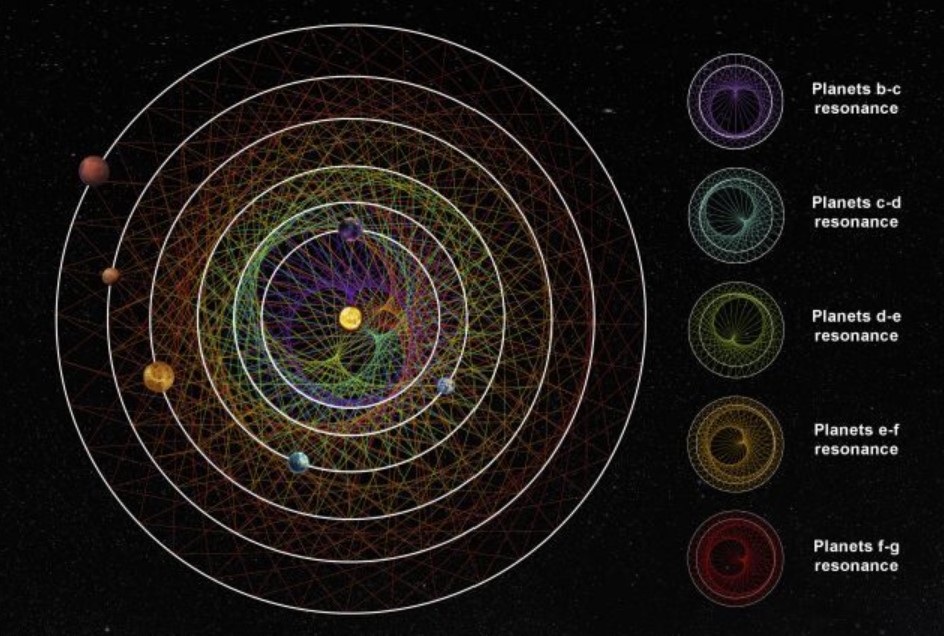By Strange Sounds
A planetary system not so far from the Solar System has six worlds orbiting their star in beautiful, perfect harmony.

Each of the six exoplanets orbiting the bright star HD 110067 has an orbit in lockstep with the adjacent exoplanets, resulting in a rare phenomenon known as a chain of resonance. This suggests that the system has existed relatively undisturbed since its formation over a billion years ago – an exceptional hidden jewel in the Milky Way.
“We think only about one percent of all systems stay in resonance,” says astrophysicist Rafael Luque of the University of Chicago. “It shows us the pristine configuration of a planetary system that has survived untouched.”
Orbital resonances are neither uncommon, nor unexpected. They occur when two bodies orbiting a third body exert a gravitational influence on each other, in such a way that their orbital periods line up. Not exactly 1:1 – that appears to be super uncommon – but it can be expressed as a ratio.
For example, Pluto and Neptune are in resonance with each other: Pluto completes 2 orbits around the Sun for every 3 of Neptune’s; that’s a resonance of 2:3. And some of Jupiter’s moons are in a resonance chain. For every 1 of Ganymede’s orbits, Europa completes 2 and Io 4 orbits, for a chain of 1:2:4, also known as a Laplace resonance.
But six exoplanetary bodies in a resonance chain? That is something really special.
The discovery was made orbiting an orange dwarf star some 100 light-years away in the northern constellation of Coma Berenices. There, NASA’s TESS exoplanet-hunting telescope spotted signs of two orbiting planets in 2020. One seemed to have a period of 5.642 days, but the orbital period of the other remained unknown.
When TESS revisited the system two years later, the data remained confusing. So Luque and his colleagues used the European Space Agency’s Cheops exoplanet-studying space telescope to take a closer look. They realized that the previously derived orbital period was incorrect, and that the data showed more than just two exoplanets. In fact, they were able to resolve three – and those, they found, were in a resonance chain.
The rest fell into place after that…
READ FULL ARTICLE HERE… (strangesounds.org)
Home | Caravan to Midnight (zutalk.com)
We Need Your Help To Keep Caravan To Midnight Going,
Please Consider Donating To Help Keep Independent Media Independent






